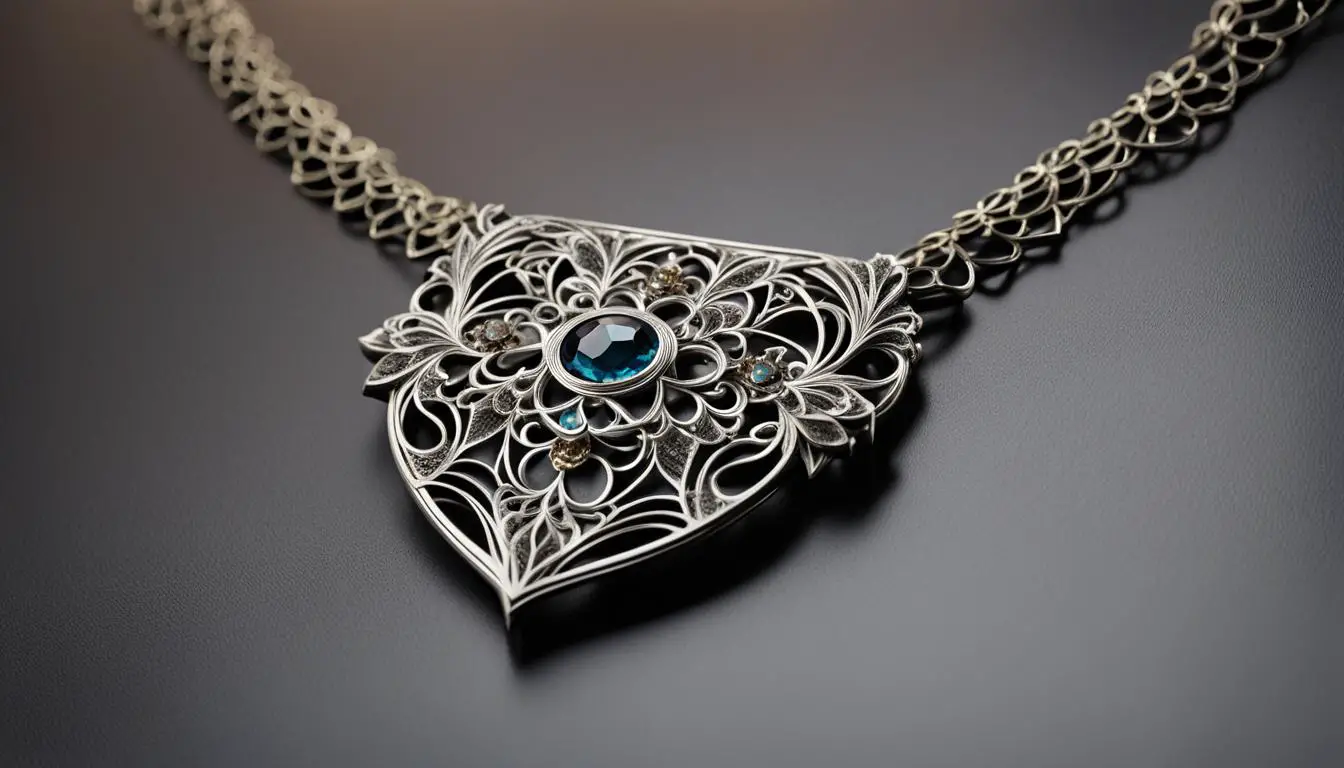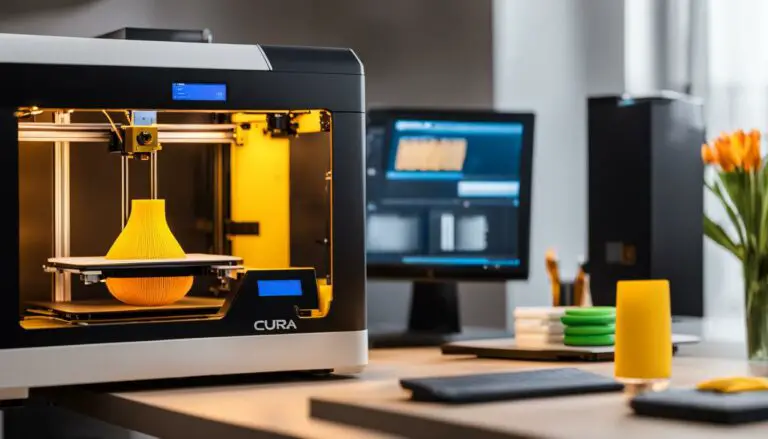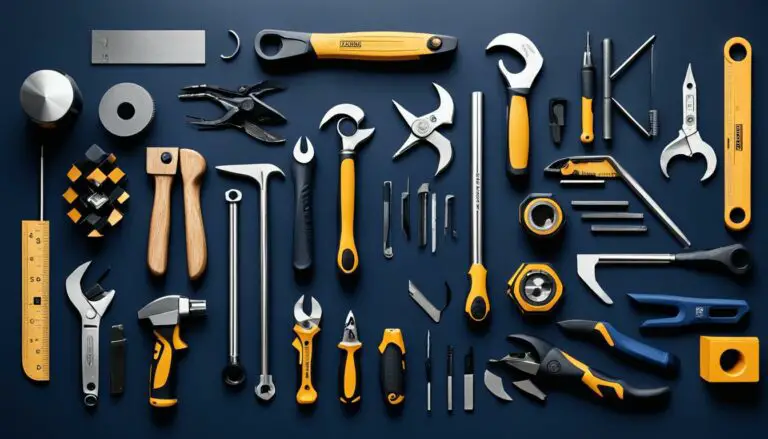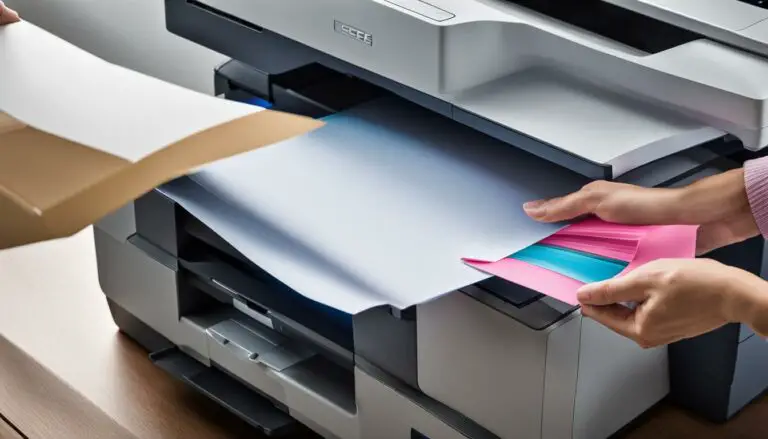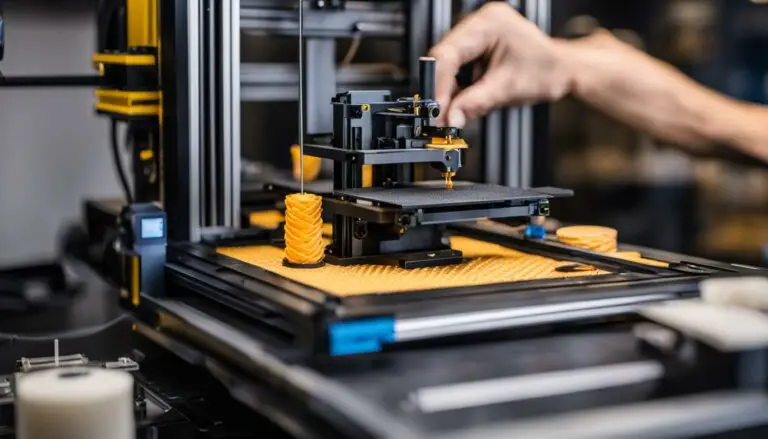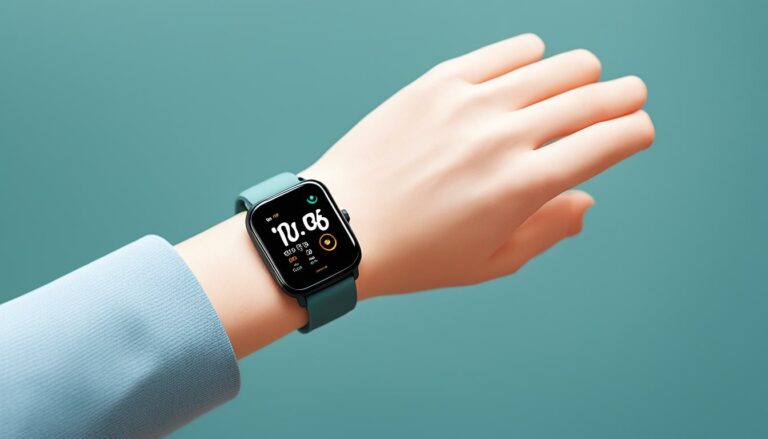Complete 3D Printed Jewelry Tutorial For Beginners
Originally posted on December 5, 2023 @ 12:41 pm
This guide will explore the captivating realm of 3D-printed jewelry and present a detailed walkthrough for individuals new to the process, so that you may fashion your own breathtaking pieces. Whether you desire tailor-made, distinct, cost-friendly, or first-rate jewelry designs, 3D printing presents boundless prospects for personal and cutting-edge creations.
Key Takeaways:
- 3D printing has revolutionized the jewelry industry, allowing for endless customization and unique designs.
- The process of 3D printing involves layering materials to create a desired shape, resulting in stunning jewelry pieces.
- Designing 3D printed jewelry starts with creating a 3D model and then transforming it into a physical piece.
- There are various ways to take advantage of 3D printed jewelry, including purchasing ready-to-wear pieces or designing your own.
- Creating your own 3D printed jewelry is accessible and fun, with plenty of resources and materials to choose from.
How 3D Printing Works
3D printing, also known as additive manufacturing, is a fascinating technology that has revolutionized various industries, including jewelry making. It operates by layering materials to create a desired shape, resulting in intricate and precise objects. Let’s delve into the process of how 3D printing works.
Layering Technology
At the core of 3D printing is the layering process. The printer takes a digital 3D model, which can be created using computer-aided design (CAD) software or obtained from online sources, and slices it into thin layers. These layers are then sequentially printed one on top of the other until the final object is formed.
This layering technique allows for unparalleled design freedom and complexity. Intricate details, intricate patterns, and unique shapes that are challenging to achieve with traditional manufacturing methods can be easily produced using 3D printing technology.
Choice of Material
The materials used in 3D printing vary, ranging from plastics, metals, ceramics, and even food. Different materials have their unique properties and characteristics, such as strength, flexibility, and durability. The choice of material depends on the specific requirements of the jewelry piece.
For example, if you want to create a delicate and intricate pendant, a lightweight and durable material like resin or nylon may be suitable. On the other hand, if you’re aiming for a more luxurious piece, precious metals like gold or silver can be used for a stunning result.
| Material | Properties |
|---|---|
| Resin | Lightweight, smooth surface finish |
| Nylon | Durable, flexible |
| Gold | Luxurious, high-value |
| Silver | Elegant, versatile |
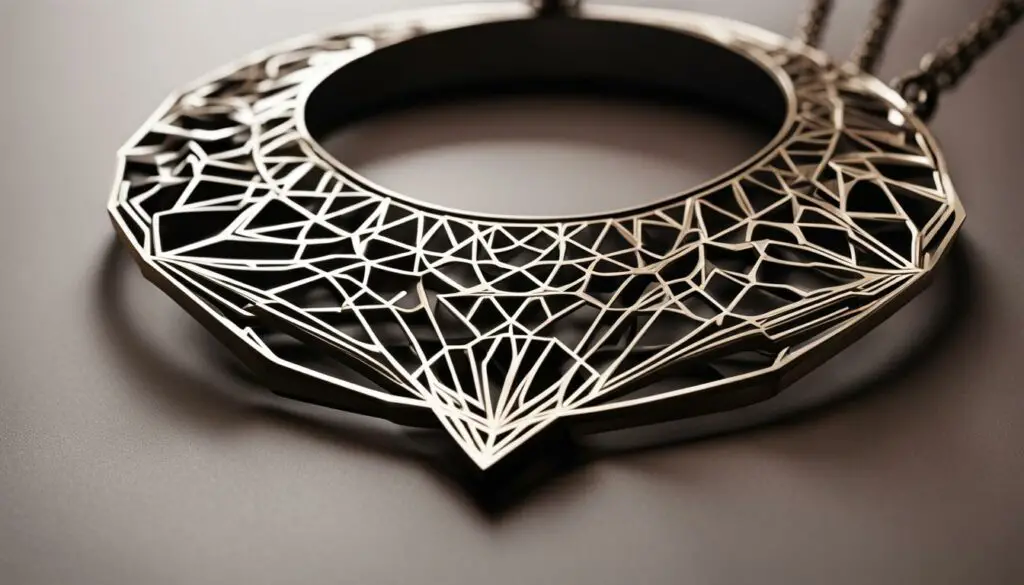
Table: Comparing Different Options for 3D Printed Jewelry
| Option | Description | Pros | Cons |
|---|---|---|---|
| Ready-to-wear jewelry | Purchasing pre-designed 3D printed jewelry | Affordable, wide variety of designs to choose from | Limited customization options |
| Design your own jewelry | Creating your own unique designs and having them 3D printed | Complete customization, freedom to express your creativity | Requires some knowledge of 3D modeling or working with designers |
| Custom design with 3D printing | Using 3D printing as part of the custom design process for traditional jewelry | Opportunity to make adjustments and see a physical representation before final creation | May be more expensive than ready-to-wear or designing your own |
Creating Your Own 3D Printed Jewelry
Creating your own 3D printed jewelry is an exciting and fulfilling endeavor that allows you to express your creativity and produce unique pieces. To get started, you’ll need a 3D model of the jewelry piece you want to make. There are various ways to obtain a 3D model, including downloading pre-made designs from online resources or creating your own using CAD software. Once you have the model, you can proceed to the next steps.
The next crucial step is selecting the right material for your 3D printed jewelry. Different materials offer varying degrees of durability, aesthetics, and affordability. Some popular options for jewelry making include PLA, ABS, and resin. Consider factors such as your desired final appearance, durability, and ease of post-processing when choosing a material that suits your needs.
After deciding on the material, it’s time to adjust the slicer settings for your 3D printer. Slicer software converts your 3D model into instructions that the printer can understand. You’ll need to configure settings such as layer height, infill density, and print speed. These settings will impact the final quality and strength of your jewelry piece, so it’s important to experiment and make adjustments as needed.
Once you have your model, material, and slicer settings ready, it’s time to start the printing process. Make sure your 3D printer is calibrated correctly and securely load the chosen material. Initiate the print job and monitor the progress to ensure everything is going smoothly. Once the printing is complete, carefully remove the printed jewelry piece from the build plate, and post-process it as necessary to achieve your desired finish.
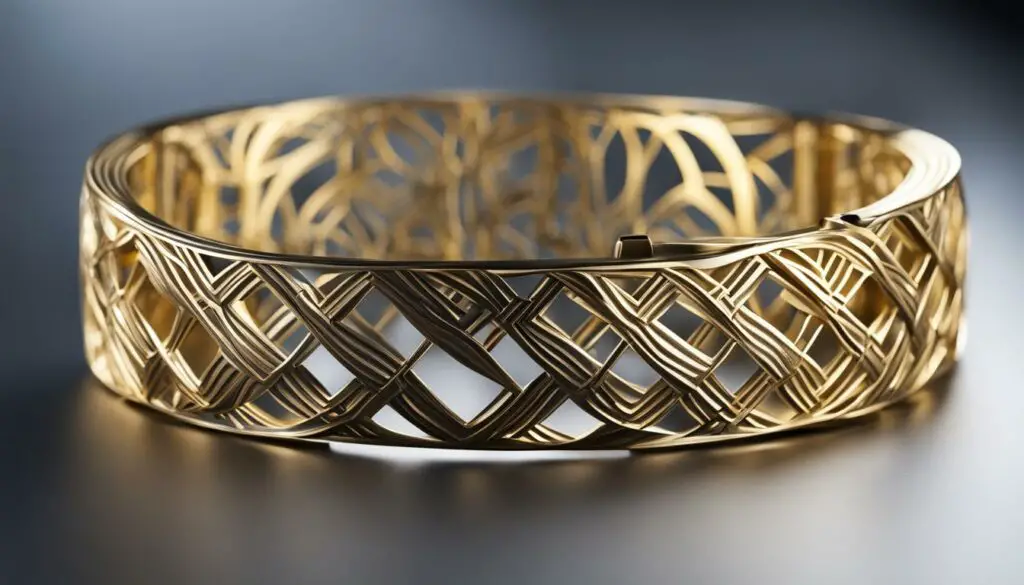
Tips for Successful 3D Printed Jewelry
- Choose a design that suits the capabilities of your 3D printer. Intricate designs may require a printer with high resolution and precision.
- Consider adding support structures to your design if it has overhangs or complex geometry to ensure successful printing.
- Experiment with different materials to achieve various looks and properties for your jewelry.
- Take post-processing into account when designing your jewelry. Sanding, polishing, and painting can greatly enhance the final appearance.
- Learn from the 3D printing community. Online forums and social media groups are excellent sources of knowledge and inspiration.
“Creating your own 3D printed jewelry allows you to explore your artistic side and produce personalized pieces that truly reflect your style. With a bit of practice and experimentation, you’ll be amazed at what you can achieve with this innovative technology.”
– Michelle Anderson, Jewelry Designer
Table: Comparison of Popular 3D Printing Materials for Jewelry Making
| Material | Aesthetics | Durability | Post-processing | Cost |
|---|---|---|---|---|
| PLA | Good | Fair | Easy to post-process | Affordable |
| ABS | Fair | High | Requires additional post-processing | Moderate |
| Resin | Excellent | High | Requires UV curing and additional post-processing | Expensive |
How to Use UNIQD to Create Custom Bracelets
UNIQD is a user-friendly online app that allows you to easily create custom bracelets without the need for prior 3D modeling or printing experience. With its intuitive interface, you can unleash your creativity and design personalized bracelets that are truly one-of-a-kind.
Getting started with UNIQD is simple. Just visit their website and click on the “Try it out” button. The app’s grid-based interface provides you with a canvas where you can draw and move lines to create your desired design. You can also add shapes, rotate your model, and choose the material and size for your bracelet.
Once you have crafted your unique design, you can save it or order a 3D print of your personalized bracelet. UNIQD offers a variety of materials to choose from, including durable plastics and metals like silver and gold. This allows you to create a bracelet that not only matches your style but also meets your desired level of quality and durability.
Create your own custom bracelet with UNIQD in just a few simple steps:
- Visit the UNIQD website and click on “Try it out”.
- Use the grid-based interface to draw and move lines, add shapes, and rotate your design.
- Select the material and size for your bracelet.
- Save your design or order a 3D print of your personalized bracelet.
With UNIQD, you don’t need any prior experience or technical knowledge to create custom bracelets. It empowers you to express your individuality and wear a piece of jewelry that is uniquely yours. So why settle for mass-produced bracelets when you can design and personalize your own with UNIQD?
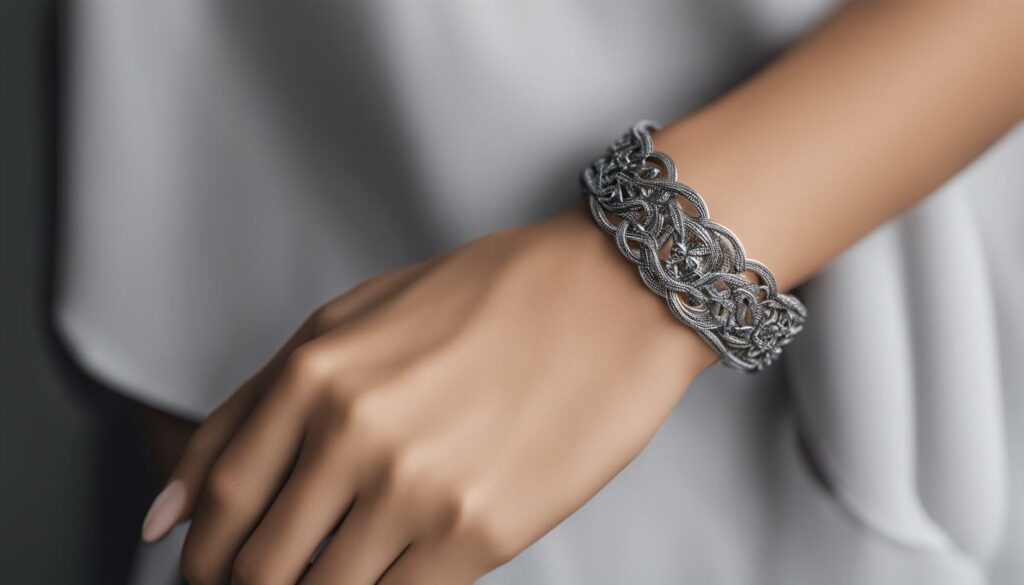
Choosing the Right 3D Printer for Jewelry Making
When venturing into the world of 3D printed jewelry, selecting the right printer is crucial to achieve the desired results. Your choice of printer will depend on factors such as layer height, materials, and precision. Here are some key considerations to help you make an informed decision:
Layer Height
For intricate and detailed jewelry designs, it’s important to choose a printer that offers a low minimum layer height. This determines the level of precision and smoothness in the final print. The Creality Ender 5 and Ender 5 Pro are popular choices for jewelry making due to their excellent precision and ability to print layers as thin as 0.1mm.
Materials
Consider the types of materials you plan to work with when selecting a printer. PLA and PETG are commonly used for jewelry making due to their ease of use, affordability, and availability in various colors. However, if you wish to explore more advanced materials like nylon or ABS, you may need a printer with an enclosure. An enclosed printer provides a stable and controlled environment for printing with these materials.
Additional Features
While not essential, certain features can enhance your experience and allow for greater flexibility. Look for printers with a heated bed, as it helps prevent warping and improves adhesion for a successful print. Consider the printer’s build volume, which determines the maximum size of jewelry pieces you can create. Additionally, pay attention to the printer’s reliability and ease of use, as these factors can greatly impact your overall experience.
With careful consideration of these factors, you can choose a 3D printer that aligns with your specific needs and preferences. Remember to research and read reviews to ensure you fully understand the capabilities and limitations of the printer before making a purchase. Happy jewelry making!
| Printer | Layer Height | Materials | Additional Features |
|---|---|---|---|
| Creality Ender 5 | 0.1mm | PLA, PETG | Heated bed, reliable |
| Creality Ender 5 Pro | 0.1mm | PLA, PETG | Heated bed, reliable |
Conclusion
Are you ready to dive into the exciting world of 3D printed jewelry? This tutorial has provided you with everything you need to get started. As a beginner, you have the opportunity to unleash your creativity and design personalized pieces that reflect your unique style and personality.
Whether you decide to design your own jewelry from scratch, purchase ready-to-wear pieces, or collaborate with local jewelers to create custom designs, 3D printing offers endless possibilities. With the right 3D printer and materials, you can bring your imagination to life and create high-quality, one-of-a-kind pieces.
So why wait? Take the first step on your 3D printing journey and explore the world of 3D printed jewelry. With this tutorial as your guide, you’ll be amazed at what you can achieve. Unleash your creativity, express yourself through personalized designs, and embark on a new and exciting adventure in jewelry making.
FAQ
How does 3D printing work?
3D printing is a process that involves layering materials to create a desired shape. It works by taking a digital 3D model and slicing it into thin layers. The printer then builds the object layer by layer until the final shape is achieved.
How do you design 3D printed jewelry?
Designing 3D printed jewelry starts with creating a 3D model using computer-aided design (CAD) software or by sculpting a physical model and scanning it into a digital format. Once the design is finalized, a wax mold is created, which serves as the foundation for the final piece.
How can I take advantage of 3D printed jewelry?
There are several options for taking advantage of 3D printed jewelry. You can purchase ready-to-wear pieces from designers who offer 3D printed jewelry, design your own jewelry and have it printed by companies that offer 3D printing services, or use 3D printing as part of the custom design process for traditional jewelry.
How can I create my own 3D printed jewelry?
To create your own 3D printed jewelry, you first need to find or create a 3D model of the jewelry piece you want to make. Once you have a model, you need to choose the right material and slicer settings for your 3D printer. After setting up the printer, you can start the printing process and wait for your jewelry piece to be created.
How do I use UNIQD to create custom bracelets?
UNIQD is an online app that allows you to create custom bracelets without the need for prior 3D modeling or printing experience. Simply visit the UNIQD website, use the app interface to draw and move lines, add shapes, rotate your model, and choose the material and size for your bracelet. Once you are happy with your design, you can save it or order a 3D print of your personalized bracelet.
How do I choose the right 3D printer for jewelry making?
When choosing a 3D printer for jewelry making, consider factors such as a low minimum layer height for detailed prints and the types of materials the printer can handle. Recommended printers for jewelry making include the Creality Ender 5 and Ender 5 Pro, which offer excellent precision. It’s also important to consider if the printer can handle the specific materials you want to use.
What are the benefits of 3D printed jewelry?
3D printed jewelry offers endless possibilities for customization and allows designers to bring their unique visions to life. It provides opportunities for affordable ready-to-wear pieces, the ability to design your own jewelry, and the incorporation of 3D printing in the custom design process for traditional jewelry.

